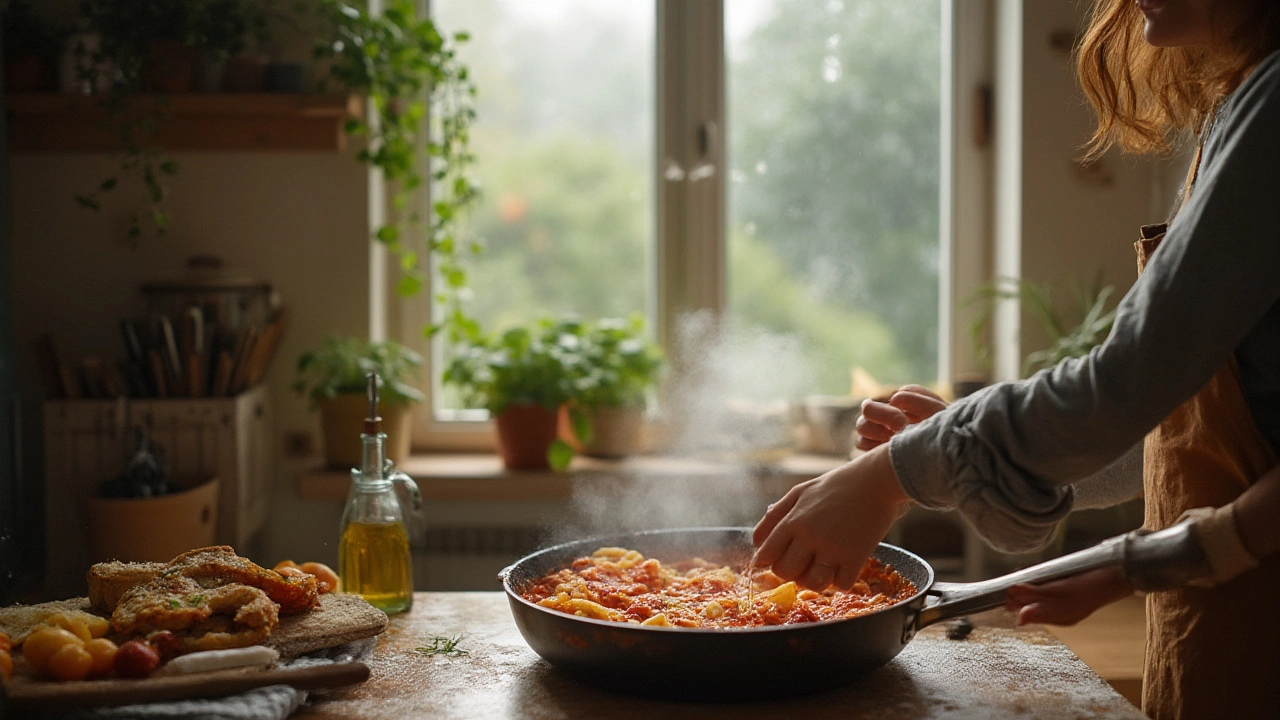Italian Cooking Made Simple: Pasta, Sauces, and Handy Tips
If you love the smell of fresh garlic, a splash of olive oil, and that satisfying bite of al dente pasta, you’re in the right place. Italian cooking doesn’t have to be fancy or time‑consuming – it’s all about a few quality ingredients and the right techniques. Below you’ll find the core ideas that turn a basic dinner into a genuine taste of Italy.
Start with the Right Pasta Basics
The easiest way to get authentic pasta every time is to follow the 10‑100‑1000 rule. That means 10 grams of salt per 1 litre of water, 100 grams of pasta per person, and 1000 ml of water for every 100 grams of pasta. Boil the water, add the salt, then drop in the pasta. Stir right away, and keep the pot uncovered so the pasta can move freely. A minute or two before the package time, scoop a cup of the starchy water – you’ll need it later to bind sauce and pasta together.
Don’t rush the draining step. Leave a little cooking water in the pot; it helps the sauce cling. Toss the pasta and sauce together over low heat for a minute, and you’ll have that silky coating that Italian chefs swear by.
Classic Pasta Dishes Worth Mastering
Four recipes stand out as the backbone of any Italian kitchen: Carbonara, Cacio e Pepe, Aglio e Olio, and Pomodoro‑based Spaghetti. Each one highlights a different technique:
- Carbonara – combine hot pasta with a mixture of eggs, Pecorino, and crispy pancetta. The residual heat cooks the eggs into a creamy sauce without scrambling.
- Cacio e Pepe – use just Pecorino, black pepper, and pasta water. The key is a rapid whisk to emulsify the cheese and water into a smooth coat.
- Aglio e Olio – sauté thin garlic slices in olive oil, add chili flakes, then toss with spaghetti. Simple, quick, and packed with flavor.
- Traditional Pomodoro – simmer ripe tomatoes, onion, garlic, and a pinch of sugar. Finish with fresh basil and a drizzle of olive oil.
Pick one each week and soon you’ll feel confident swapping sauces, adding veggies, or turning them into baked casseroles.
Mix It Up with Sauce Alternatives
Tomato isn’t the only star in Italian cooking. Try a creamy avocado‑basil sauce for a bright, dairy‑free twist, or blend roasted red peppers with walnuts for a smoky, nutty topping. Both options pair beautifully with linguine or penne and keep dinner exciting without extra effort.
Another easy swap is a simple butter‑sage sauce. Melt butter, add fresh sage leaves, and let them crisp for a minute. Toss with gnocchi or fresh pasta for a dish that feels luxurious but takes under 10 minutes.
Remember, great Italian food is about balance. Taste as you go, adjust salt, and finish each plate with a drizzle of high‑quality olive oil or a sprinkle of grated cheese. The more you practice these basics, the easier it becomes to improvise and create your own regional twists.
Ready to bring Italy to your table? Start with the 10‑100‑1000 rule, master one classic dish, then experiment with a sauce alternative. In no time you’ll be serving meals that taste like they came from a trattoria, all from the comfort of your own kitchen.
Unlocking Flavor: How the Pasta Water Trick Transforms Every Pasta Dish
Learn how the pasta water trick can turn ordinary pasta into restaurant-quality dishes. Master using starchy water for better flavor, texture, and creamy sauces.
Classic Italian Pasta Dishes: Mastering the Four Icons
Discover the four classic Italian pasta dishes that every pasta lover should know: Cacio e Pepe, Carbonara, Amatriciana, and Gricia. Learn what makes each dish unique, including tips on choosing the right ingredients and mastering techniques. This guide offers a deep dive into the flavors and traditions that make Italian cuisine beloved worldwide. Whether cooking for family or indulging solo, transform each meal into an authentic experience.
